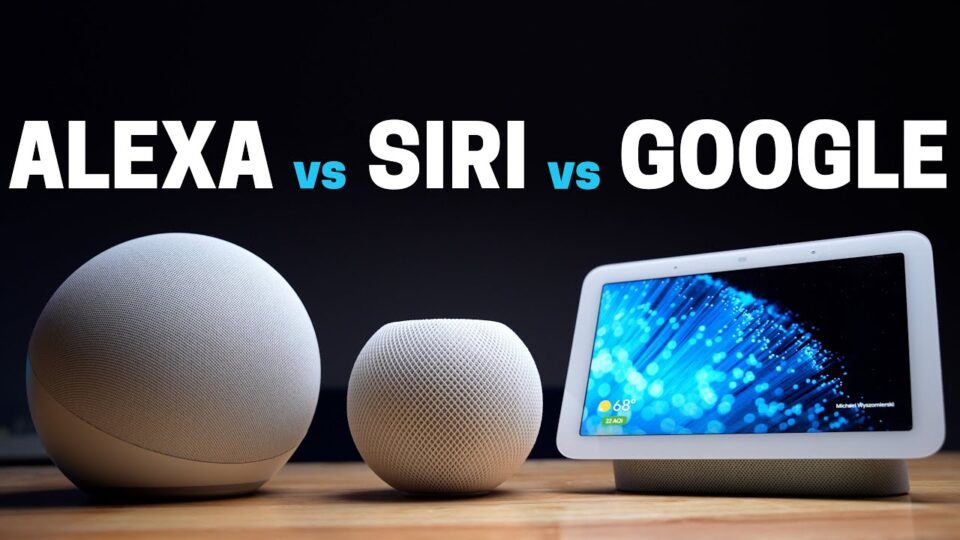Table of Contents
ToggleUnderstanding Smart Home Basics
What is a Smart Home?
A smart home is a residence equipped with devices that can be controlled remotely via a smartphone, tablet, or computer. These devices are often interconnected through the Internet of Things (IoT), enabling them to communicate and interact with each other. Smart homes can include various systems such as lighting, heating, security, entertainment, and appliances, all designed to enhance comfort, convenience, and efficiency.
Benefits of a Smart Home
- Convenience: Automate daily tasks like turning off lights, adjusting thermostats, and locking doors.
- Security: Monitor your home with smart cameras, doorbells, and sensors.
- Energy Efficiency: Save on energy bills with smart thermostats, lights, and appliances.
- Comfort: Customize your living environment with voice commands and personalized settings.
- Accessibility: Assistive technologies for individuals with disabilities.
Planning Your Smart Home Setup
Assess Your Needs and Goals
Before purchasing any devices, it’s crucial to identify what you want to achieve with your smart home. Consider the following questions:
- What aspects of your home do you want to automate (lighting, security, climate control, etc.)?
- What devices do you already own, and are they compatible with smart home systems?
- What is your budget for setting up a smart home?
Choose a Smart Home Ecosystem

Before shopping for devices, decide which ecosystem suits you best: Google Home, Amazon Alexa, or Apple HomeKit. While third-party devices often support multiple standards, things will run more smoothly if you pick one main ecosystem. Here’s a quick breakdown of each:
- Google Home: Integrated Google Assistant, excellent voice command responsiveness, ideal for Android users.
- Amazon Alexa: Broad compatibility, numerous third-party Skills, affordable devices, requires Alexa app for mobile control.
- Apple HomeKit: Best for Apple users, secure and private, fewer supported devices, needs a HomeKit hub for remote control.
By carefully choosing your ecosystem, you can ensure a seamless and efficient smart home setup.
Google Home: Affordable Entry and Robust Integration
Google’s Nest Mini is the most cost-effective way to enter the Google Home ecosystem, and if you already have an Android phone, you’re halfway there. Google Home is renowned for its smart assistant, Google Assistant, which excels in voice command responsiveness, conversational speech, and handling complex commands and follow-up requests. The Google Home app provides quick access to smart-home shortcuts, making it a convenient choice for Android users.
Amazon Alexa: Broad Compatibility and Affordability
Amazon’s Alexa, with its early start in the smart-home market, offers the widest range of compatible products. You can ask Alexa anything, although its answers might not always be as precise as Google’s. Alexa supports a vast array of Skills (similar to smartphone apps) developed by third parties, and its speakers and smart displays are some of the most affordable, especially during major sales events like Prime Day. To control Alexa from your phone, you need to install the Alexa app, which must be open to issue voice commands.
Apple HomeKit: Best for Apple Users
For iPhone, iPad, and Mac users, Apple HomeKit is the obvious choice despite being the most restrictive of the three. Apple’s stringent third-party certification ensures smooth operation for supported devices. While HomeKit has fewer compatible devices compared to Alexa or Google Assistant, it covers the major smart-home brands. The Apple Home app is elegant and easy to use, and devices are straightforward to set up. HomeKit is also the most secure platform, collecting minimal data by default and keeping it on the device whenever possible. For remote control, you need a HomeKit hub such as a HomePod Mini, Apple TV, or iPad. Siri is currently the weakest of the three voice assistants, but it is continually improving.
Read more: The Best Smart Home Devices for Apple HomeKit and Siri
Google, Amazon, and Apple collect data on your usage habits, including voice recordings of your interactions with their assistants. These recordings are reviewed by humans for accuracy, but backlash over transparency has led to better ways to control how your data is handled. We have several guides on keeping your recordings private, deleting stored voice recordings and activity, and making smart speakers and displays as private as possible.
Other Options
If you prefer to avoid the big three ecosystems, consider Home Assistant, an open-source platform designed to give you local control and safeguard your privacy. Home Assistant is a powerful platform with an active community and offers numerous integrations and automation options, but it can be complex and time-consuming to configure.
Samsung’s SmartThings and Tuya’s Smart Life are also viable options, though both platforms use Google Assistant or Amazon Alexa for voice commands.
Choose Smart Speakers and Displays

Smart speakers and displays act as the central hub for your smart home, allowing you to control other devices using voice commands.
- Amazon Echo: Available in various models, it supports Alexa and integrates with numerous smart devices.
- Google Nest Hub: Offers Google Assistant and features a screen for added functionality.
- Apple HomePod: Compatible with Siri and HomeKit, ideal for Apple users.
While you can control your smart-home gadgets using your smartphone, either by talking to a voice assistant or using an app, we recommend having a mix of smart speakers and smart displays throughout your home. This ensures your assistant can always hear you, eliminating the need to shout commands. Smart displays, in particular, are versatile as they offer simple touch controls that anyone can use, which is especially useful for those unfamiliar with smart-home setups.
Take smart lighting, for example. To control smart lights with a voice assistant, light switches must be left in the on position. This can confuse guests and children who may not have access to voice controls or smartphone apps. People are likely to turn off your switches due to years of habit. You can address this by installing smart switches, but you’ll need to decide whether to replace your original switches or add a second set beside them.
Most ecosystems now offer the ability for anyone in the home to create their own profile. Some assistants can even identify who is speaking for a more personalized experience. Whatever solution you choose, be sure to demonstrate how to use it to your family, roommates, and guests so they feel comfortable with the system.
Read more: Top 5 Smart Home Hubs in 2024
Bluetooth, Wi-Fi, or Smart Hubs?
When setting up a smart home, you may find that devices can connect via Bluetooth, Wi-Fi, or a dedicated smart hub, such as Philips Hue bulbs. Here’s a breakdown of each option:
- Bluetooth: Bluetooth connections are generally slower and less reliable than Wi-Fi. They also have limited range and bandwidth, making them less ideal for smart home devices.
- Wi-Fi: While Wi-Fi might seem like the simplest solution due to its widespread availability, it can lead to network congestion. This can slow down your internet connection and affect the performance of your smart devices.
- Smart Hubs: Dedicated smart hubs can help alleviate Wi-Fi congestion, providing more stability and making connected devices more responsive. Hubs typically use technologies designed for low power consumption, low bandwidth, and long range, such as Thread, Zigbee, Z-Wave, and LoRa.
Smart hubs can be standalone devices, but it is becoming increasingly common for manufacturers to integrate hub technologies into smart speakers, displays, routers, and other devices. The downside of using a smart hub is that they require power and sometimes need to be connected to your router via an Ethernet port. Despite this, the enhanced performance and reliability often make smart hubs the preferred choice for managing a large number of smart home devices.
Verify Smart-Home Support
To ensure a smart-home product is compatible with your chosen ecosystem, look for specific logos on the packaging or product webpage. At a minimum, you want to see one of the following:
- Works with the Google Assistant
- Works with Alexa
- Works with Apple HomeKit
These logos guarantee a basic level of support, meaning you can connect the device to the respective ecosystem and control it with voice commands. However, keep in mind that support for an ecosystem can vary significantly between products. For example, one robot vacuum might only support start and stop voice commands, while another might offer advanced features like cleaning specific rooms or operating for a set duration. Always check the full list of commands or user reviews to understand the device’s capabilities fully.
Additionally, you may encounter third-party smart-home devices with built-in voice assistants. A device labeled with “Alexa built-in” means you can interact directly with Alexa through that device. Similarly, a device featuring the “Google Assistant” logo indicates direct interaction capabilities. An example is the Sonos Beam soundbar, which includes both Google Assistant and Alexa, allowing you to use it just like a Nest or Echo speaker. Currently, Siri is only available on Apple-made devices, but it is expected to be integrated into third-party devices in the near future.
By verifying smart-home support and understanding the extent of each device’s capabilities, you can make informed decisions and ensure seamless integration within your smart home ecosystem.
Understanding Smart-Home Standards
The smart-home industry has long been plagued by a lack of common standards, creating a confusing landscape for consumers. Although improvements are being made, understanding the different wireless standards that connect your smart-home devices is crucial.
Popular Wireless Standards:
- ZigBee: Used by brands like Philips Hue, Logitech, LG, and Samsung, ZigBee is a reliable standard for smart-home communication.
- Z-Wave: Utilized by companies such as Honeywell, GE, and Samsung, Z-Wave offers similar functionality to ZigBee but operates on a different frequency to avoid interference.
- Thread: A newer standard used by Apple, Google, and Nanoleaf, Thread creates a mesh network without requiring a hub, making it a versatile and modern option.
- Bluetooth and Bluetooth LE (Low Energy): While common, Bluetooth standards are less ideal for extensive smart-home setups due to range and bandwidth limitations.
Despite the variety of standards, many smart-home devices can work together within a single ecosystem. Manufacturers often choose which ecosystem(s) their devices support, ensuring compatibility regardless of the underlying technology.
Introducing Matter
Matter is a new wireless interoperability standard designed to simplify and unify the smart-home experience. With the support of over 200 companies, including Google, Amazon, Apple, Samsung, and the ZigBee Alliance, Matter aims to make all smart-home devices work together securely, reliably, and seamlessly.
Matter acts as a middleman, bridging the gap between different standards and ecosystems. For example, with Matter, a Google Nest Hub smart display can show the video feed from a Ring doorbell, a level of interoperability not currently possible.
Future-Proofing with Matter
Most new devices are expected to support Matter, and many older devices will receive updates to incorporate the new standard. In smart lighting, both Philips Hue and Nanoleaf have committed to supporting Matter for their current and future devices. Google has also announced Matter support for Nest devices and Android phones, streamlining the setup process through the Google Home app.
Understanding these standards and the role of Matter can help you navigate the smart-home landscape, ensuring your devices communicate effectively and enhancing your overall smart-home experience.
Setting Up Smart-Home Devices
Most major smart-home brands offer straightforward compatibility with the leading ecosystems. For instance, Philips Hue bulbs can be added directly through the Google Home or Apple Home apps. However, this seamless integration isn’t always the norm. Many devices will require you to use a third-party app for the initial setup and possibly for ongoing configuration and control.
The setup guide that accompanies every smart-home device usually instructs you to download the companion app as the first step. This process may involve scanning a QR code or entering a serial number, so make sure to complete this step before mounting the device or discarding any packaging. These codes are often found on the back or underside of devices or in the instruction manual.
Linking your device to your chosen ecosystem might be included in the setup process, but that’s not always the case. You might need to manually link your account through your Apple Home or Google Home settings. For Alexa, you will likely need to install the relevant skill.
Once your device is set up and linked to your ecosystem, you might not need to use the third-party app again, though this varies by device. The Google Home, Apple Home, and Alexa apps typically offer simplified controls for most devices, so keeping the third-party app handy might be beneficial for accessing specific settings if needed.
Find Good Spots and Pick Names Carefully
When setting up smart-home devices, it’s crucial to find suitable locations. These devices often need a power outlet and a strong Wi-Fi signal. Additionally, consider accessibility, especially for battery-powered devices that will require periodic charging. Always test the device in its intended spot before permanently installing it, such as with security cameras.
Naming your smart-home devices thoughtfully is also important. Consistent naming conventions help ensure that voice commands are effective. We recommend naming devices based on their location, such as “living room speaker” or “office light.” For multiple devices in the same room, use numbers or area-specific names, like “kitchen light counter” and “kitchen table light” or “kitchen light 1” and “kitchen light 2.”
Avoid duplicate names, as they can cause confusion and issues with smart-home platforms and voice assistants. Clear, distinct names make it easier for everyone in the household to use voice commands accurately.
Grouping, Automation, and Routines
Organizing your smart-home devices into groups or rooms within your smart-home ecosystem’s app is essential, especially when you have multiple devices like lights. Instead of saying “Turn on living room light 1” and “Turn on living room light 2,” you can group all the lights and simply say, “Turn on living room lights.”
Depending on your platform, you can create groups, subsets of devices within rooms, or even group devices across multiple rooms by creating custom groups, zones, or rooms. Spending time on this setup enhances control and flexibility for voice commands and automation.
One of the best features of a smart home is automation. For instance, your system might detect when you leave the house and turn everything off, or it can react to your return by turning on lights, adjusting the air conditioner, and playing your favorite music.
Scheduling actions is also handy for devices like robot vacuums to maintain your home. Specific words can trigger tasks; for example, saying “Good morning” to Google Assistant can deliver a weather and news report, open curtains, and start the coffee machine. Our guides on creating Google Home routines, Alexa routines, and setting up Siri Shortcuts will help you get started.
If you have devices from different platforms, you can still create automated routines using a third-party service like IFTTT (If This Then That). While Google, Alexa, and Siri routines are somewhat limited, IFTTT offers complex automation chains and integrates various devices and software. For example, IFTTT can turn on your Philips Hue front garden and porch lights when your video doorbell detects someone approaching.
What to Do When You Move or Change Routers
Moving to a new house or changing your router can be daunting, especially if you need to set up every device again. To make this process easier, set your new router with the same name and password as the old one.
If someone is moving out of your home, read our guide on how to un-set up your smart home to prevent them from remotely controlling your gadgets.
Data Privacy Concerns
Smart-home devices often have microphones and cameras, raising privacy concerns. Security breaches can expose personal information or recordings stored in the cloud. Always read the manufacturer’s privacy policy and ensure you’re comfortable with their data usage. Research manufacturers to check if they’ve been involved in recent hacks or issues.
Most smart speakers and displays have physical mute buttons, but you might forget to unmute them, which can be inconvenient. Consider plugging your speaker or display into a smart plug to schedule off times when they’re not in use.
Be cautious about devices with cameras, such as robot vacuums or smart displays. They are generally unnecessary unless for security purposes. For smart displays with cameras, you can buy webcam covers that slide open when needed.
Use devices that support multi-factor authentication (two-factor authentication) to reduce the risk of unauthorized access. This typically involves confirming your account with a text message or email. Some devices also offer biometric login using a fingerprint or facial scan on your phone. These features are not always enabled by default, so take the time to set them up.
Check out our digital security guide and our guide to personal data collection for more tips on keeping your digital life secure.
Troubleshooting Tips
Setting up smart-home devices can be tricky. Here are some tips based on our experience:
- Check Wi-Fi Connection: Ensure your phone is connected to the same network and Wi-Fi band (most devices need 2.4 GHz) as the device you’re setting up. Many routers choose the band automatically; our guide on setting up smart home devices with 2.4 GHz Wi-Fi can help.
- Repeat Setup Process: If a device doesn’t connect initially, quit and reload the app to try again.
- Restart Devices: Turning devices off and on often resolves issues.
- Reboot Router: If rebooting the device doesn’t work, try rebooting your router and ensure it has the latest firmware.
- Online Support: Search online for your specific device model and issue. Support forums can be valuable resources for finding solutions.
- Factory Reset: As a last resort, perform a factory reset. Check the instructions for resetting the device and consider deleting and reinstalling any companion app for a fresh setup.
By following these steps, you can navigate common challenges and enjoy a smooth smart-home experience.
Conclusion
Setting up a smart home involves careful planning and organization. By choosing the right ecosystem, ensuring strong Wi-Fi connectivity, and following best practices for device setup and security, you can create a seamless and efficient smart-home environment. With thoughtful automation and routines, your smart home will enhance your daily life, providing convenience, security, and enjoyment.






